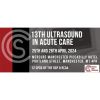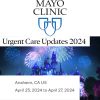ICU Management & Practice, Volume 20 - Issue 4, 2020
Norepinephrine is recommended as first-line agent to increase mean arterial pressure (MAP) (Rhodes et al. 2017), but for severe septic shock patients who do not achieve target MAP despite norepinephrine (NE) infusion, arginine vasopressin is recommended as second-line vasopressor to increase MAP and reduce norepinephrine infusion (Rhodes et al. 2017). In this article, we will discuss why hypotension in certain patients become catecholamine refractory, how to identify it, and why is vasopressin recommended for such patients.
Understanding Hypotension in Septic Shock
Hypotension in septic shock can be linked to loss of vascular tone, myocardial dysfunction, or insufficient intravascular volume (Varpula et al. 2005).
Loss of vascular tone in septic shock is a major contributor of hypotension. This is linked to an increased production of nitric oxide (NO), a potent vasodilator as a result of the inflammatory response to infection (Dalimonte et al. 2020), accompanied by a drop in endogenous vasopressor production, such as vasopressin (Russell 2011) and catecholamines (Rittirsch et al. 2008).
Vasoactive agents, which can be classified into catecholamine or non-catecholamines (Dalimonte et al. 2020), activate specific receptors located on vascular myocytes, such as α1 adrenergic and V1a receptors, which increase cytosolic calcium concentrations in vascular myocytes, leading to vasoconstriction, increasing vascular tone and consequently increasing MAP (Jentzer and Hollenberg 2020). Norepinephrine, a catecholamine, increases vascular tone by activating the α1 adrenergic receptors and like other catecholamines (i.e. epinephrine, dopamine) also activates the ß-adrenergic receptor, such as ß1 and ß2.
Catecholamine Refractory Septic Shock
In certain patients, catecholamine infusion is unable to stimulate the α1 adrenergic receptors to induce vasoconstriction and increase MAP. This impaired vascular responsiveness to catecholamines is due to downregulation or decoupling of α1 adrenergic receptors (Jentzer and Hollenberg 2020), primarily caused by lactic acidosis (Rittirsch et al. 2008). This could be identified by persistent hypotension despite norepinephrine infusion of >0.2-0.3μg/kg/min combined with infusion of fluids and adequate or high cardiac output (Jentzer and Hollenberg 2020) indicative of catecholamine refractory septic shock.
In such cases, non-catecholamine vasopressors with an alternative mode of action are needed to achieve vasoconstriction and increase blood pressure.
Arginine Vasopressin as Second-line Vasopressor
Arginine vasopressin, also known as vasopressin, argipressin, and anti-diuretic hormone, is a naturally produced human hormone and a non-catecholamine vasopressor. It achieves vasoconstriction by activating the V1a receptors and as a result can increases blood pressure and MAP (Dünser 2013). Based on that, arginine vasopressin is recommended by the SSC guidelines to be added as a second-line vasoactive agent (0.01-0.03IU/min) when increasing mean arterial pressure with norepinephrine alone is not possible, and/or to reduce catecholamine infusion (Rhodes et al. 2017). Unlike synthetic vasopressin analogs, which have an 8-hour half-life, arginine vasopressin has a half-life of 5-20 minutes only. This short effective half-life provides a high degree of control, as the vasopressor effect could be quickly halted once infusion is discontinued in case of unwanted side-effects (Tanja et al. 2006).
The early combination of arginine vasopressin has also shown to decrease the need for Renal Replacement Therapy (RRT) by 55% for septic shock patients at risk of renal failure (1.5x serum creatine based on the RIFLE criteria) and reduce the progression to renal failure (Gordon et al. 2010).
In a systematic review of 23 randomised controlled trials (3088 patients), the addition of arginine vasopressin to catecholamine vasopressors compared with catecholamines alone was associated with a lower risk of atrial fibrillation (RR, 0.77) (McIntyre et al. 2018). This can be related to a reduction in adrenergic stimulation provided by the catecholamine sparing effect of arginine vasopressin.
Additionally, arginine vasopressin does not seem to constrict pulmonary arteries, as at low doses (0.01-0.03 IU/min) arginine vasopressin causes endothelial nitric oxide release in pulmonary arteries, when V1a receptors are activated (Currigan et al. 2014; Chan et al. 2015; Holmes et al. 2004).
Arginine vasopressin is marketed by AMOMED under the following brand names: Empressin®, Embesin®, Embesyn®, Empesin®, Empressine® and ReverPleg®. For more information regarding the product, please visit amomed.com. 
Key Points
- Septic shock patients suffering from hypotension despite >0.2-0.3μg/kg/min of norepinephrine infusion combined with fluid administration and high adequate cardiac function is indicative catecholamine refractory septic shock.
- Arginine vasopressin is a naturally produced human hormone with vasoconstriction effect via V1 receptor activation and a short 5-20 minutes half-life.
- Arginine vasopressin is recommended by the SSC Gudielines as a second-line vasopressor to increasing mean arterial pressure and reduce norepinephrine dose.
- The early combination of arginine vasopressin has shown to decrease the need for Renal Replacement Therapy.
- The addition of arginine vasopressin to catecholamine vasopressors compared with catecholamines alone was associated with a lower risk of atrial fibrillation
References:
Chan C et al. (2015) Sepsis and Pulmonary Arterial Hypertension in the ICU. Advances in Pulmonary Hypertension, 13:4: 188-196.
Currigan DA et al. (2014) Vasoconstrictor responses to vasopressor agents in human pulmonary and radial arteries. Anesthesiology, 121:930-936.
Dalimonte MA, DeGrado JR, Anger KE (2020) Vasoactive Agents for Adult Septic Shock: An Update and Review. J Pharm Pract, 33(4):523-532. doi:10.1177/0897190019844124
Dünser MW, Takala J, Ulmer H et al. (2009) Arterial blood pressure during early sepsis and outcome. Intensive Care Med 35, 1225–1233. https://doi.org/10.1007/s00134-009-1427-2
Gordon AC et al. (2010) The effects of vasopressin on acute kidney injury in septic shock. Intensive Care Med, 36:83-91.
Holmes CL et al. (2004) Science Review: Vasopressin and the cardiovascular system part 2 - clinical physiology. Crit Care, 8(1):15-23.
Jentzer JC, Hollenberg SM (2020) Vasopressor and Inotrope Therapy in Cardiac Critical Care. J Intensive Care Med. doi: 10.1177/0885066620917630. Epub ahead of print.
Jentzer JC, Vallabhajosyula S, Khanna AK, Chawla LS, Busse, LW, Kashani KB (2018) Management of refractory vasodilatory shock. Chest, 154(3):416-426
McIntyre WF at al. (2018) Association of Vasopressin Plus Catecholamine Vasopressors vs Catechol-amines Alone With Atrial Fibrillation in Patients With Distributive Shock: A Systematic Re-view and Meta-analysis. JAMA, 319(18):1889-1900.
Rhodes A, Evans LE, Alhazzani W et al. (2017) Surviving Sepsis Campaign: International Guidelines for Management of Sepsis and Septic Shock: 2016. Intensive Care Med, 43(3):304-377. doi:10.1007/s00134-017-4683-6
Rittirsch D, Flierl MA, Ward PA (2008) Harmful molecular mechanisms in sepsis. Nat Rev Immunol, 8(10):776-787. doi:10.1038/nri2402
Russell JA (2011) Bench-to-bedside review: Vasopressin in the management of septic shock. Crit Care, 15(226):1-19
Varpula M, Tallgren M, Saukkonen K et al. (2005) Hemodynamic variables related to outcome in septic shock. Intensive Care Med 31, 1066-1071. https://doi.org/10.1007/s00134-005-2688-z




















